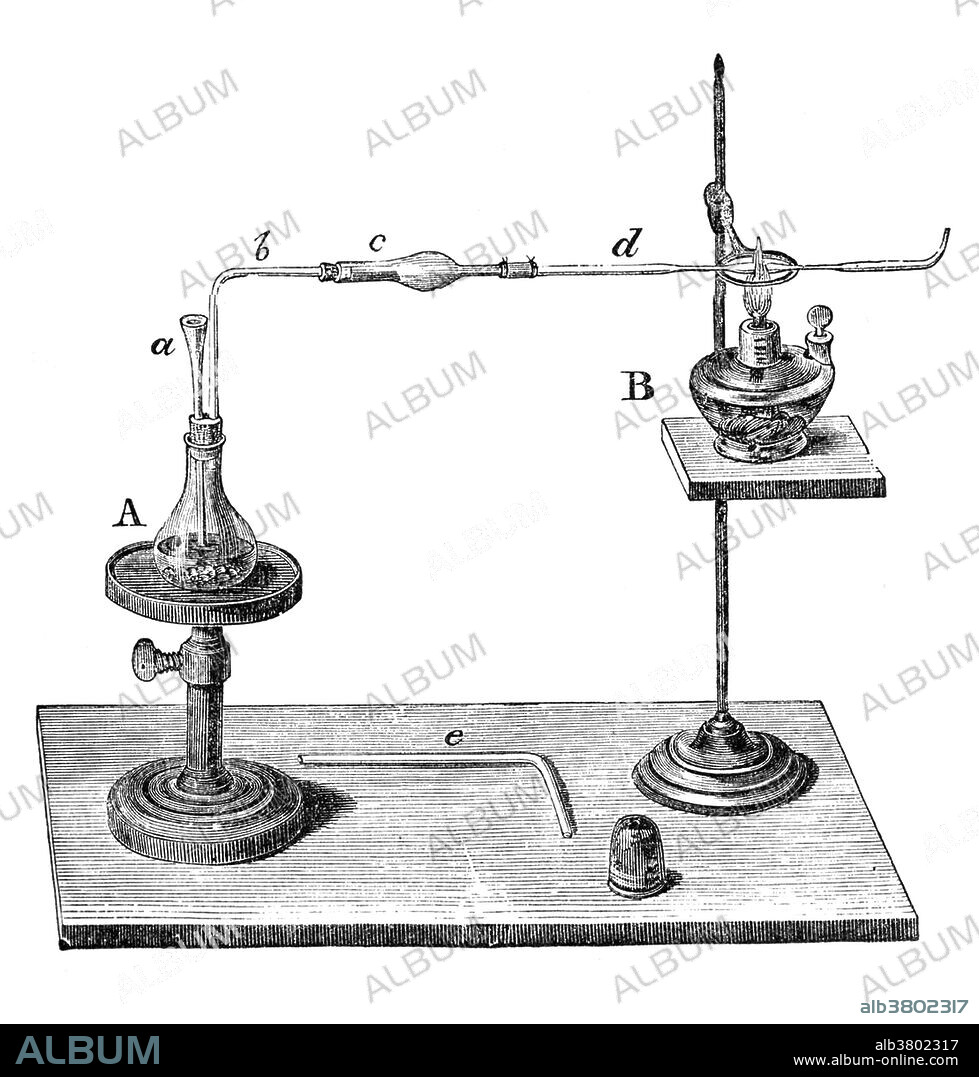alb3802317
Marsh Test Apparatus, 1867

|
Add to another lightbox |
|
Add to another lightbox |



Buy this image.
Select the use:

Title:
Marsh Test Apparatus, 1867
Caption:
Marsh Test Apparatus, Steel engraving, 1867. The Marsh test is a method for the detection of minute amounts of arsenic in foods (the residue of fruit spray) or in stomach contents. The sample is placed in a flask with arsenic-free zinc and sulfuric acid. Arsine gas (also hydrogen) forms and is led through a drying tube to a hard glass tube in which it is heated. The arsenic is deposited as a "mirror" just beyond the heated area and on any cold surface held in the burning gas emanating from the jet. Antimony gives a similar test, but the deposit is insoluble in sodium hypochlorite, whereas arsenic will dissolve. The test was named for its inventor, the English chemist James Marsh.
Category:
History: Modern • Research: Forensics
Credit:
Album / NLM/Science Source
Releases:
Image size:
3000 x 3138 px | 26.9 MB
Print size:
25.4 x 26.6 cm | 10.0 x 10.5 in (300 dpi)
Keywords:
1867 • 19TH CENTURY • ANTIMONY • APPARATUS • ARSENIC • ARSENIC-FREE ZINC • ARSINE GAS • ART • ARTWORK • BURNING GAS • BW • CHEMISTRY • COLD SURFACE • DEPOSITED • DETECTION • DIAGRAM • DRAWING • DRYING TUBE • ENGRAVING • FLASK • FORENSIC • HARD GLASS TUBE • HEATED • HISTORIC • HISTORICAL • HISTORY • HISTORY: MODERN • HYDROGEN • ILLUSTRATION • ILLUSTRATIONS • INSOLUBLE • INTOXICATION • INVENTION • JAMES MARSH • MARSH TEST • MEDICAL EXAMINER • METHOD • POISON • POISONING • RESEARCH • RESEARCH: FORENSICS • SCIENCE • SODIUM HYPOCHLORITE • SULFURIC ACID • TECHNIQUE • TEST • TOXICOLOGY • TRACE AMOUNT
 Pinterest
Pinterest Twitter
Twitter Facebook
Facebook Copy link
Copy link Email
Email
